The ocean’s depths are home to a myriad of incredible, mysterious, and sometimes terrifying creatures. With less than 5% of the Earth’s oceans explored, it’s a colossal frontier full of unknowns. As we dive deeper into the inky abyss, we find some of the most bizarre and chilling inhabitants on our planet. Let’s explore 15 of the scariest creatures lurking beneath the waves, each more fascinating than frightening.
15. Anglerfish: The Ocean’s Predatory Lure
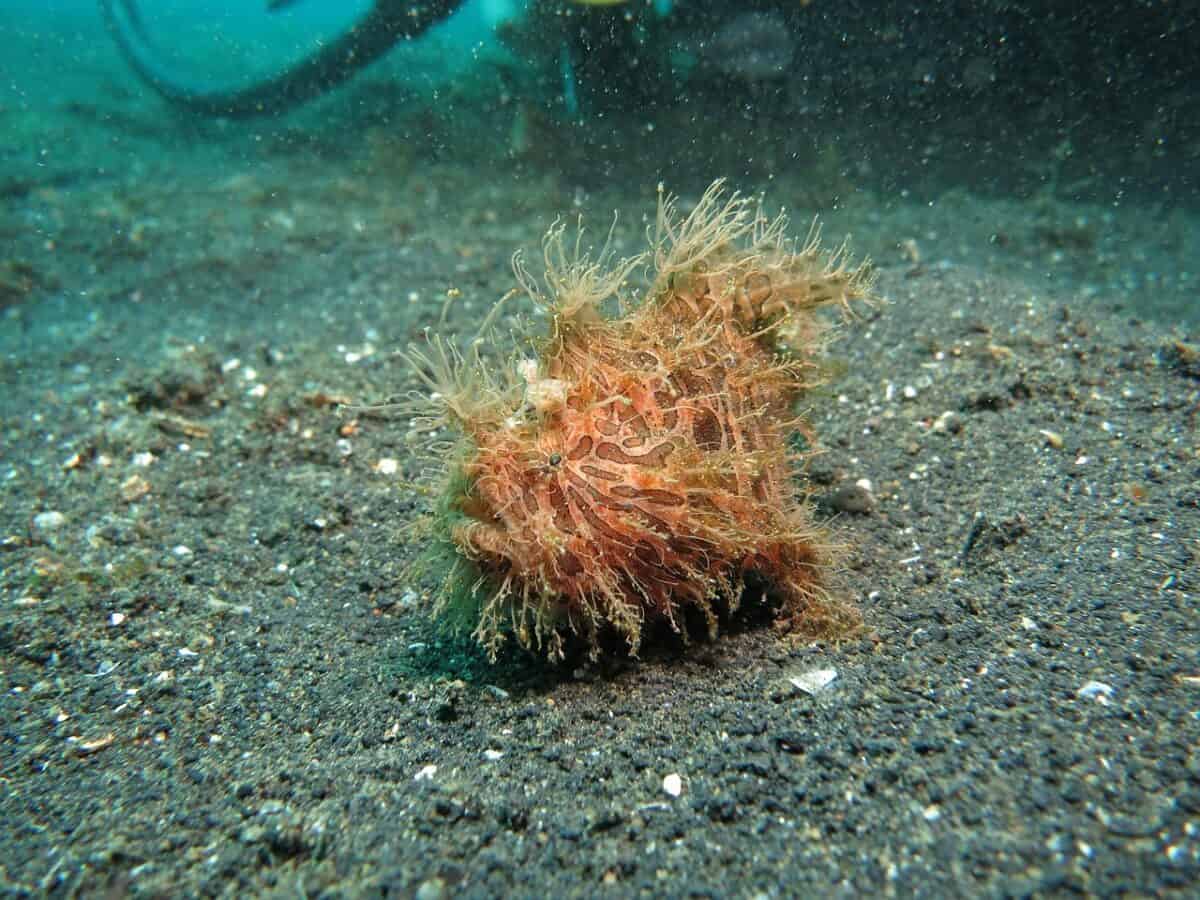
The anglerfish is notorious for its terrifying appearance, equipped with sharp teeth and an eerie, bioluminescent lure protruding from its head. This beacon of light dangles near its gaping maw, attracting unsuspecting prey in the pitch-black depths. Found at depths of up to 2,000 meters, the anglerfish’s grotesque form and predatory nature make it a symbol of the ocean’s darker corners.
14. Gulper Eel: The Elastic Marvel

The gulper eel, also known as the pelican eel, is equipped with an expandable mouth capable of engulfing prey larger than itself. This deep-sea dweller can reach lengths of up to 1 meter. When hunting, its oversized jaws create a bizarre silhouette, giving it an unsettling presence in the darkness.
13. Goblin Shark: The Living Fossil
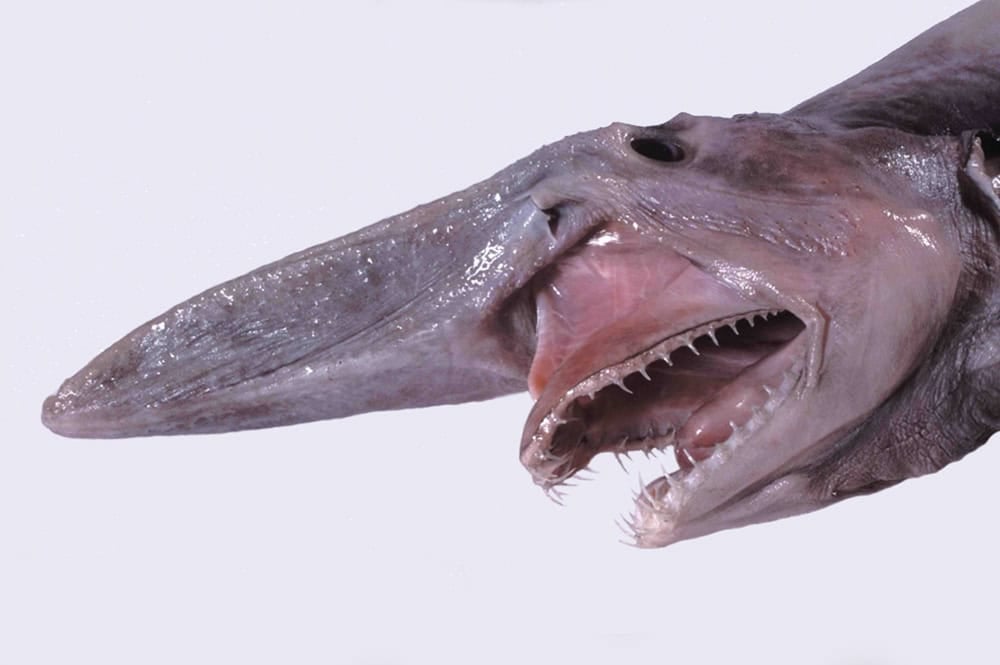
Sporting a distinctive pink hue and elongate snout, the goblin shark is often referred to as a living fossil. This rare deep-sea creature can grow up to 13 feet long. Its elongated jaws, lined with needle-like teeth, can snap forward to seize prey, earning it a firm spot among the ocean’s most terrifying predators.
12. Vampire Squid: The Creature Cloaked in Mystery

Despite their ominous name, vampire squids are actually gentle scavengers of the deep. Their name comes from their dark, webbed skin that resembles a cape. Found at depths of up to 3,000 feet, these creatures use bioluminescence for protection, illuminating the truly otherworldly nature of the deep sea.
11. Frilled Shark: The Ocean’s Relic

The frilled shark, with its 25 rows of backwards-facing, trident-shaped teeth, resembles something from the prehistoric past. This elusive species can grow over 6 feet in length and is known for its snake-like body and ferocious hunting prowess, embodying the primal fear of the unknown.
10. Fangtooth Fish: Tiny but Terrifying
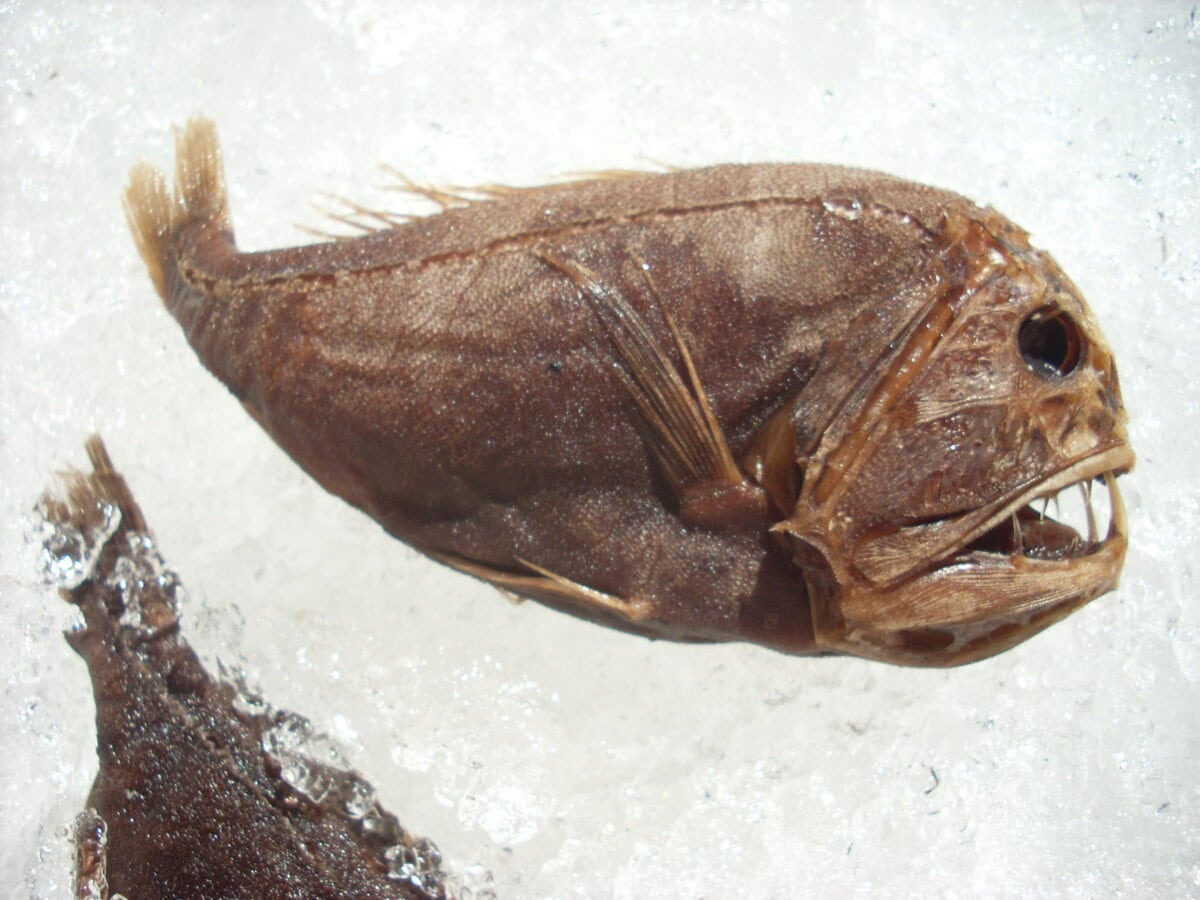
Despite its small stature, the fangtooth fish possesses some of the largest teeth relative to its body size in the ocean. These fearsome weapons help it capture even larger prey, earning its place on this list due to its aggressive appearance and formidable hunting capabilities.
9. Giant Isopod: The Deep-Sea Behemoth
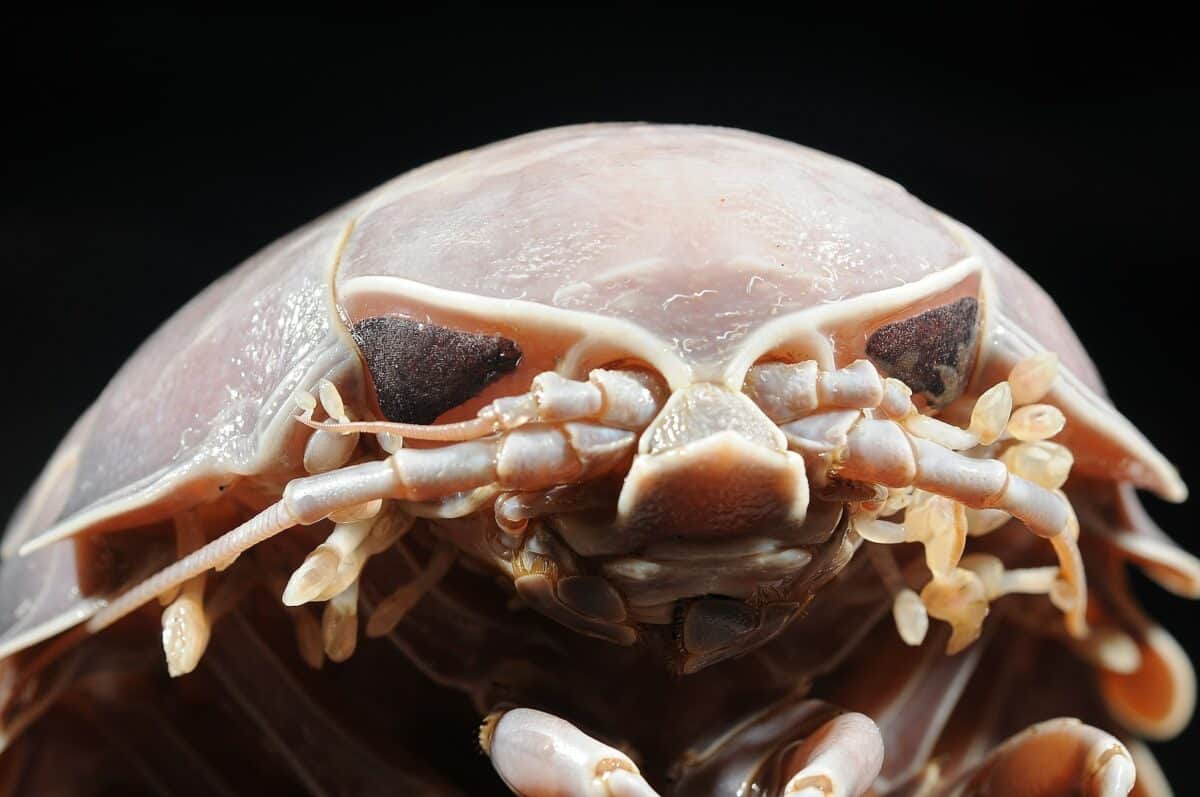
The giant isopod, resembling a gargantuan version of the common pillbug, scours the deep-sea floor as a scavenger. Growing up to 2.5 feet long, it’s well adapted to the frigid, high-pressure environment of the ocean depths. Its armored body and eerie form make it a living reminder of the harsh conditions beneath the sea.
8. Dragonfish: The Predator of the Abyss

Dragonfish inhabit the ocean’s twilight zone, equipped with bioluminescent photophores that help them hunt in the dark. Their fang-like teeth and bioluminescent lure make them formidable nocturnal hunters and a chilling sight to behold.
7. Blue-Ringed Octopus: The Tiny Terror

Small but deadly, the blue-ringed octopus is famed for its stunning blue rings that warn of its potent venom. Each spot serves as a warning to predators, but this octopus remains a master of camouflage. Found in the Pacific and Indian Oceans, its lethal bite is potent enough to paralyze humans.
6. Deep-Sea Hatchetfish: The Living Mirror
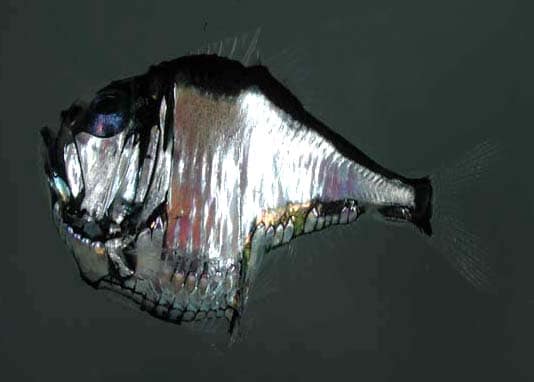
The deep-sea hatchetfish sports reflective scales that help it blend seamlessly with sunlight filtering down from the surface, a technique known as counter-illumination. These slender, eerie fish navigate the depths with ghostly elegance, showcasing nature’s ingenious adaptations for survival in hostile environments.
5. Barreleye Fish: The Transparent Voyager
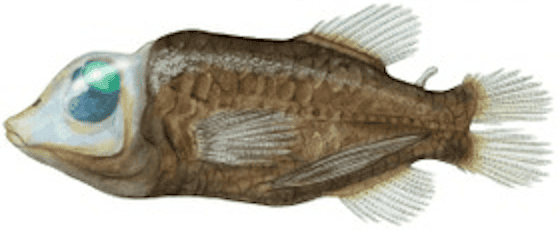
With a transparent head and tubular eyes, the barreleye fish offers an extraordinary view of the deep-sea world. Its upward-looking eyes see through its transparent shield, allowing it to spot prey from below. This fascinating adaptation underscores the peculiar beauty found in the ocean’s depths.
4. Sea Pigs: The Quirky Detritivores

Sea pigs, peculiar sea cucumbers, roam the ocean floor on tiny tentacle-like feet. These unusual creatures are adept at detecting and consuming organic particles, playing a vital role in the ocean’s ecosystem. Despite their odd appearance, they are harmless, drifting quietly across the seabed.
3. The Glass Squid: The Phantom of the Deep

The glass squid, nearly invisible with a transparent body, is a deep-sea master of disguise. Its gelatinous form and camouflaging skills help it escape predators. Floating through the ocean’s abyss, its ghostly presence adds to the enigmatic allure of the deep.
2. Zombie Worms: Nature’s Recyclers
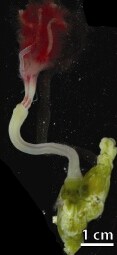
Zombie worms, or Osedax, thrive on the bones of dead whales, secreting acid to bore into them and extract nutrients. These tube-dwelling creatures contribute to the decomposition process in the ocean, demonstrating the unique life cycles that sustain deep-sea ecosystems.
1. Stargazer Fish: The Lurking Ambusher

The stargazer fish’s protruding eyes and upward-facing mouth give it a sinister appearance. Buried in sand, it ambushes unsuspecting prey with a burst of speed. Their electric organs can deliver a shock, adding to their menacing reputation and highlighting the cutthroat nature of deep-sea survival.
The depths of the ocean remain one of Earth’s greatest mysteries, brimming with extraordinary life forms that defy our imagination. From bioluminescent hunters to bizarre scavengers, these creatures provide a glimpse into an environment where adaptation and survival reign supreme. As we continue to explore this underwater realm, each discovery invites us to marvel at nature’s creativity, reminding us of the vast unknowns dwelling in our planet’s deepest waters.
- How Climate Change Is Shifting Bird Migrations in the U.S. - August 14, 2025
- The Real Reason Sharks Circle Before Attacking - August 14, 2025
- Can You Train a Pet Snake? Here’s What Experts Say - August 14, 2025

